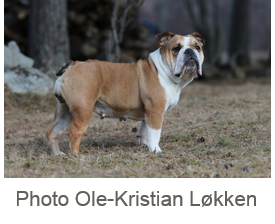Continuing our series on The Brachycephalic Issue:
An exciting research project is underway at Queen’s Veterinary School Hospital, Department of Veterinary Medicine, University of Cambridge spearheaded by a stellar team of researchers : Jane Ladlow, MA VetMB CertSAS CertVR DipECVS MRCVS; Dr David Sargan, MA PhD; Dr Vicki Adams, DVM MSc PhD MRCVS; and Nai-Chieh Liu DVM MPhil into the Brachycephalic Obstructive Airway Syndrome (BOAS).
In their flyer, Non-invasive Respiratory Function Assessment in Brachycephalic Dogs, they describe the study and call for participants in the UK.
(internal link flyer -- BOAS flyers version 4 .pdf)
This group has also published their findings in French Bulldogs. See: The Brachycephalic Issue: Evidence and Efforts: Characterisation of Brachycephalic Obstructive Airway Syndrome in French Bulldogs Using Whole-Body Barometric Plethysmography
As they note, and as has been noted by many, diagnosis of the BOAS syndrome and measurement of its severity can be challenging. In Rowena Packer's study, introduced in another article in this series, the researchers used a combination of clinical history, owner questionnaires, examination for stenotic nares and a new standardised clinical examination protocol to identify dogs affected by BOAS. The authors discuss that there could have been some mis-classified dogs because they were unable to use invasive diagnostic procedures (e.g. direct visualization of the pharynx).
The Cambridge researchers are developing a non-invasive test for respiratory function:
"Over the past three years, we have been using a non-invasive method called whole-body barometric plethysmography (WBBP), to access the respiratory function of more than 510 dogs objectively. The preliminary results indicate that we now have the ability to quantify airway function and this method shows significant promise as a potential clinical diagnostic tool. We will be using the objective data to investigate possible associations between respiratory function, skull dimensions, and genetic markers for BOAS."
Their efforts to develop the screening test involve both healthy brachycephalic dogs and BOAS-affected dogs.

As noted in a new release from The Finnish Kennel Club, they have both ongoing and new projects in brachycelphalic breeds, and their approach also looks to non-invasive measurements - so that any evaluations found to be effective can be widely applied in the evaluation of potential breeding animals - as well as functional testing (walking). Such testing is being developed and done in varioius countries and often represents a collaboration between many of our IPFD Partners, other kennel clubs, universities, veterinarians, breeders and other.
The Cambridge study is funded by the University of Cambridge and The Kennel Club's Charitable Health Trust.
As stated for the Cambridge study:
"The longterm aims of this study are to improve the health and welfare of brachycephalic breeds by reducing the incidence of severe BOAS and to give these dogs a better quality of life."
It is exciting to see that many efforts are being directed to The Brachycephalic Issue. One area that needs more evidence is the determination of the prevalence and severity of BOAS in the population and some of the tools being developed should be of great help. It will require international collaboration to most effectively and efficiently move forward.
BOAS_flyers_version_4_.pdf
 Donate
Donate

Recommended Comments
There are no comments to display.
Join the conversation
You can post now and register later. If you have an account, sign in now to post with your account.
Note: Your post will require moderator approval before it will be visible.